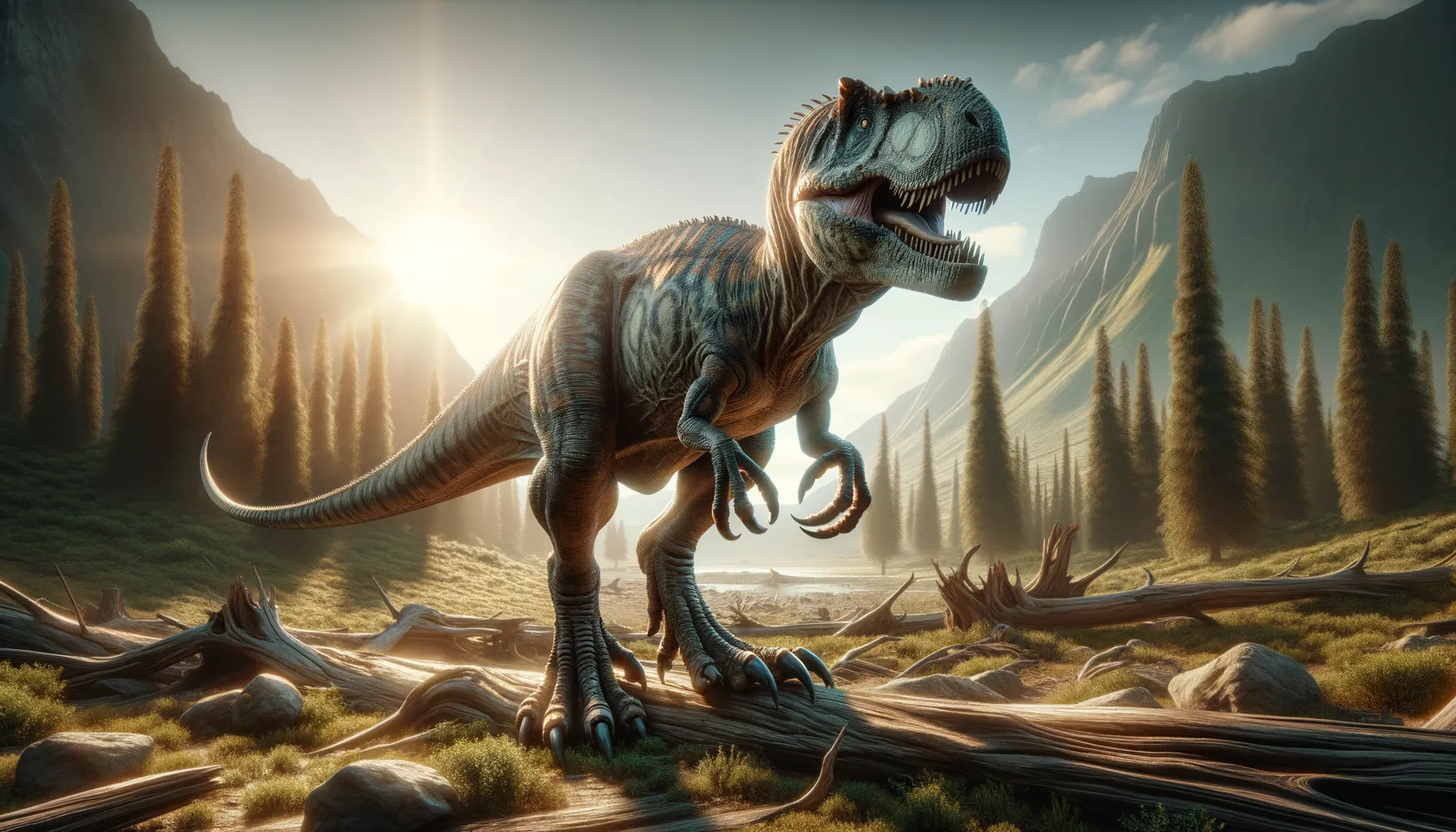
Erliansaurus
Clawed herbivore thriving in ancient lands!
Period
Cretaceous
Length
About 6 meters long.
Height
Approximately 1.8 meters tall at the hip.
Weight
Estimated to be around 300 kilograms.
Erliansaurus was a genus of therizinosauroid theropod that roamed the mid Cretaceous period. Known for its peculiar adaptations, it had large claws and a herbivorous dentition, distinguishing it from other theropods. Its discovery has provided considerable insights into the diversity and evolution of therizinosaurs. As a bipedal creature, Erliansaurus navigated its environment efficiently, balancing on its strong hind legs while using its forelimbs for gathering food.
Diet
Erliansaurus was primarily herbivorous, feeding on a variety of vegetation available in its region. With beak-like jaws, it adapted well to consuming tough plant material, providing it with necessary nutrients.
Hunting
Being predominantly a plant-eater, Erliansaurus did not engage in hunting. However, it used its large claws for foraging and possibly for defense against predators.
Environmental challenges
Living during the Cretaceous period, Erliansaurus faced challenges like shifting climates and the presence of large predators. Its plant-based diet required finding and accessing various vegetation types as environments changed. Seasonal variations could also have influenced available resources, prompting potential migrations in search of food.
Speed
Moderate, adapted for foraging rather than fleeing.
Lifespan
Estimated to be around 10 to 15 years.
First discovery
First discovered in Inner Mongolia, China, in 2002.
Fun Facts
- Erliansaurus was a feathered dinosaur that lived approximately 96 million years ago during the Late Cretaceous period.
- This dinosaur was relatively small, estimated to be around 6 meters long, which is about the size of a large car.
- Erliansaurus belonged to the therizinosaur family, known for their large claws and herbivorous diet.
- Its name, Erliansaurus, means 'Erlian lizard,' named after the region in Inner Mongolia, China, where its fossils were discovered.
- Unlike many other theropods, Erliansaurus was primarily plant-eating, using its long neck to reach foliage.
- Despite its intimidating claws, Erliansaurus was not a predator and used its claws for grabbing and eating plants.
- The discovery of Erliansaurus helped scientists understand the evolutionary relationships between theropod dinosaurs and birds.
Growth and Development
Erliansaurus likely experienced moderate growth rates, reaching adulthood in a span of a few years. This growth was supported by a diet rich in plant matter, suggesting a relatively stable environment for young dinosaurs to develop. Fossil evidence suggests that young Erliansaurus were smaller and more vulnerable, requiring strategic adaptations to survive against predators.
Habitat
Erliansaurus inhabited semi-arid and forested areas of what is now Inner Mongolia. This environment provided both shelter and abundant plant life, ideal for a herbivore. Rivers and floodplains were likely important for sustaining plant growth, offering diverse foliage for Erliansaurus to thrive.
Interaction with other species
Erliansaurus shared its habitat with various other dinosaur species, including large predators. Its herbivorous nature minimized direct competition with carnivores but placed it in a constant struggle to find enough food. Coexistence with other herbivores would have involved competition for resources, but sometimes also cooperation in fending off predators.
Natural lifespan
In the wild, Erliansaurus could live up to 15 years naturally.
Reproduction
Erliansaurus likely reproduced by laying eggs, as was common for theropods. Nesting behaviors may have involved laying eggs in secluded areas to protect them from predators and environmental threats. The young would have been vulnerable and required growth time before becoming self-sufficient.
Social behaviour
Erliansaurus might have exhibited some level of social behavior, possibly engaging in group foraging to better locate food and provide protection against predators. While explicit fossil evidence of social structure is lacking, its environmental adaptations suggest some communal interactions for survival advantages.
Fossil locations
The primary fossils of Erliansaurus were unearthed in the Iren Dabasu Formation in Inner Mongolia. These discoveries have been instrumental in understanding the diversity within therizinosaurs and their ecological roles. The fossils are relatively rare, making them valuable for paleontological studies.
